City guide: Xiamen
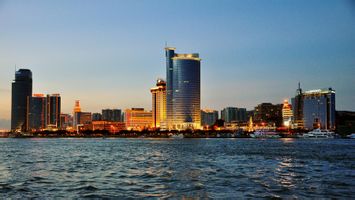
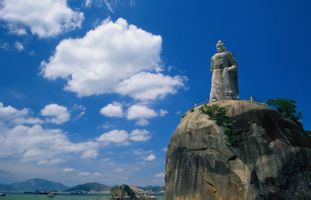
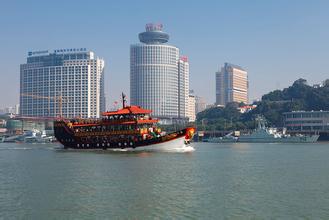

CONTENT
| 1. General introduction | 3. Education & Health care |
| Location & population | International Schools |
| Climate | Hospitals |
| Economy & industry | |
| 2. Transportation | 4. Recreation |
| Railway | Shopping |
| Air | Nightlife |
| Cuisine | |
| Attractions |
1. General introduction
Xiamen is a major city on the southeast (Taiwan Strait) coast of the People’s Republic
of China. It is administrated as a sub-provincial city of Fujian province with an area of
1,699.39 square kilometers (656.14 sq.) and population of 3,67 million. Its built up area
is now bigger than the old urban island area and covers all six districts of Xiamen (Huli,
Siming, Jimei, Tong’an, Haicang and recently Xiang’an). It borders Quanzhou to the
north and Zhangzhou making this a unique build up area of more than five million
people. The Jinnen (Kinmen) Islands administered by the Republic of China (Taiwan)
are less than 10 kilometers (6.2 mi) away.
Xiamen and the surrounding southern Fujian countryside are the ancestral home to
large communities of overseas Chinese in Southern Asia. The city was a treaty port in
the 19th century and one of the four original Special Economic Zones opened to
foreign investment and trade when China began economic reforms in the early
1980s. It is endowed with educational and cultural institutions supported by the
overseas Chinese diaspora. In 2006, Xiamen was ranked as China’s “most romantic
leisure city” in 2011.
Being of a subtropical monsoon climate with mild weather all year round expect the
typhoon months, this city is an ideal tourist destination for you. It is a typical littoral
city with abundant tourist attractions such as islands, mountains, temples and parks,
etc., providing you with a full sightseeing schedule. The well-known Gulangyu Island,
South Putuo Temple and other tourist areas like Jimei, Hulishan Battery, Wanshiyan,
etc. are highly recommended. A sea tourist line is also available for you to enjoy the
amazing scenery of many beautiful small islands around.
?Location & population
Located at the southeast coast of China, Xiamen is a tourist city of Fujian Province
famous for its attractive seascape.
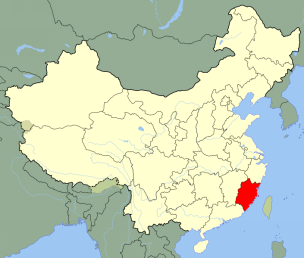

According to the 2010 Census, Xiamen has a population of 3,531,347 inhabitants,
almost 1.8 times the population counted for the last census in 2000 (which was of
2,053,070 inhabitants). The annual average population growth was of 5.57% for the
period 2000–2010., however this masks the population explosion in Jimei District,
which quadrupled since the prior census; Huli District's population more than doubled.
The resident population was 1,967,800 in 2013 year end, and with a population of 3.73
million (those residing at least half a year). The total resident population is said to be
4,255,000 in December 2014, without specifying what counts as a resident.
Climate
Xiamen weather is mild and pleasant most of the year because the city has a subtropical
monsoon climate. In this case, the whole year round is good time to visit except that
typhoons influence the weather four to five times during the months from July to
September. The annual temperatures average 21C (about 70F) and rainfall abounds
mainly in the months from May to August. Winters are mild, requiring only sweaters
or light coats in the coldest January. Summers are free from extreme heat, although
thin clothes are needed in the hottest July
If you are interested in the local culture and customs, you can pay attention to the
various local festivals. For example, June is noted for the Phoenix Flower Tourist
Festival, August is noted for the Gulangyu Piano Festival, and the week of Mid-Autumn
Day is noted for the Bobing ('Cake Gambling') Festival.
In addition to the local festivals, this city also hosts many international activities, of
which the China International Fair for Investment and Trade (CIFIT) is the most
influential. CIFIT is held here every September 8th to 11th since 1997. It is now a
grand international investment promotion event and serves as a bridge connecting
China and other parts of the world.
Spring
Spring is from March to May. There are frequent and sharp intervals of weather and
temperature. It is very changeable, and there will be occasional cold days, droughts or
thunderstorms.
Summer
Summer is from June to September. It is hot and wet with occasional typhoons and
thunderstorms, but it is relatively drier in July. The average temperature is summer
months are 32 °C (90 °F). Wear any summer clothes, such as shorts, shirts and skirts.
Umbrella is also needed.
Autumn
Autumn is from October to November. The weather is pleasant being sunny, cool and
dry. Temperature falls from mid or late October. The average low and high temperature
is 16 °C (61 °F) and 23 °C (73 °F) in October, and 12 °C (54 °F) and 20 °C (68 °F) in
November. Prepare shirt, light sweater and coat.
Winter
Winter is from December to February. It is mild, and generally dry, sunny with little
rainfall and mist. The average temperature in winter is 13 °C (55 °F). February is the
coldest month, and the lowest temperature is at 2 °C (36 °F). Sweater and overcoat
are enough for winter.
Economy & industry
Xiamen has a diverse and well-developed economy. Primary economic activities include
fishing, shipbuilding, food processing, tanning, textiles, machine tool manufacturing,
chemical industries, telecommunications and financial services. The city has economic
and trade relations with 162 countries[citation needed] and regions worldwide, and
benefits from foreign investment, particularly capital from Hong Kong, Macau and
Taiwan.
In 2008, a total of 356 projects with foreign direct investment had been approved in
the city, with a contractual foreign investment amount of US$1.896 billion and an
actual foreign investment amount of US$2.042 billion.[20] In 1992, Xiamen was ranked
among the top 10 Chinese cities in relation to comprehensive strengths with its GDP
increasing by an average of over 20% annually. In 2008, Xiamen's GDP amounted to
156 billion Yuan, an increase of 11.1% over the previous year; and the per-capita GDP
was 62,651 yuan (US$9,017). Further economic reforms were introduced, and this brought
the total volume of imports and exports in 2008 to US$45.4 billion, while that of exports
totalled US$29.4 billion.[20]
Xiamen is also the host of the China International Fair for Investment and Trade held
annually in early September to attract foreign direct investment into the Chinese
mainland.
Xiamen has excellent road, rail, air and port infrastructure. In the last few years, Xiamen
has invested more than RMB30 billion in infrastructure construction.
2. Transportation
Xiamen has intercity air transport, train transport, and coach transport. Transportation
within Xiamen is also very convenient: we have information on taxis, city buses, ferries,
and cycling. It’s very convenient for you to travel to Xiamen and its main attractions
(Gulangyu Island and Yongding’s Earth Buildings).
Air
Having been in operation since October 22, 1983, Gaoqi International Airport (XMN) is
one of the busiest airports in China. It is located at the northeast end of the city just 10
kilometers (about 6.2 miles) from the city center. Over 50 domestic airline routes to 58
cities in China including the major cities of Beijing, Shanghai, Guangzhou, Hong Kong,
Nanjing, Guilin, Chengdu, Harbin, and others. In addition, a number of international
flights leave from Gaoqi International Airport every week taking passengers to 17 cities
in South Korea, Japan, America, Southeast Asia, and Europe.
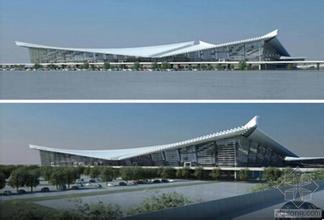
Railway
Xiamen Railway Station, located at the intersection of Xiahe Road and Hudong Road,
can be easily reached by many buses such as the No.16, No.18, No.21, No.25, No.28
and No.37. Connected to the mainland by the transportation trunk line of the Ying-Xia
(Yingtan-Xiamen) Railway Line across the Xiamen Bridge, the city has direct trains to
most of the main cities in Fujian Province including Fuzhou, Sanming and Zhangzhou.
Trains also depart for most major cities in China including Beijing, Shanghai, Guangzhou,
Xian, Nanjing, Hangzhou, Chongqing, and Kunming. In the peak seasons, there are also
special tourist trains to Wuyishan, a hot tourist destination featuring the famous Wuyishan
Mountain. It's about 37 hours to Beijing, 26 hours to Shanghai, 14 hours to Guangzhou,
and 30 hours to Xian.
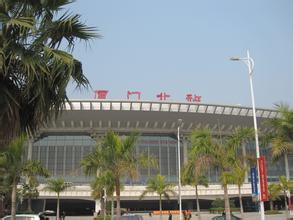
3. Education & Health care
International Schools
1. Xiamen International School
The curriculum at Xiamen International School (XIS) is based on advanced American
programs and child development research. It offers a kindergarten through 12th grade
education for the children of foreign nationals.
Address: 262 Xingbei San Lu, Xinglin, Jimei District, Xiamen
Contact: 0592-6256581
Website: http://www.xischina.com
Getting there: Take bus No.406 to Yingcai Lukou
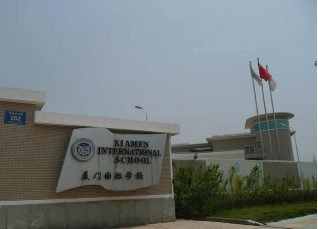
2.Manila Xiamen International School (MXIS)
Manila Xiamen International School (MXIS), the first International School in Xiamen
City and Fujian Province is a college preparatory co-educational day and boarding
school. The school offers Pre-school, Elementary and High School courses to children
of expatriates, overseas students and to the dependents of locals who would want
to avail of its service. Tuition is about 6,000-8,000 USD/year for elementary school,
and 11,000 USD for high school.
Address: Bldg 1, 176 Daxue Lu, Xiamen
Contact: 0592-2089925, 2089926, 2089927
Website: http://www.mxis-cn.com/english/Home.htm
Getting there: Take bus No.22, 29, 35, 47, 48, 86, 87, 96 to Xiada Hospital
Hospitals
As one of the first tier cities, Shanghai’s healthcare infrastructure is better compared
to the second and third tier cities. Having said that, many expatriates still find the
healthcare facilities and treatments in Shanghai very limited. The good news is that
the quality of service and availability of treatment are slowly improving. Before leaving
for Shanghai, ensure that your routine medical check-up and vaccination are up-to-date,
including vision and dental. To enter China, no vaccinations are required but do ensure
that the standard, like polio, diphtheria and tetanus, are up-to-date. Discuss with your
doctor on any additional vaccinations that may be advisable as some, like for hepatitis
B may require several shots over a period of time. Bring copies of your medical and
immunization record, prescriptions for medication and an extra pair of your visual aid.
Most importantly, ensure that your health insurance covers you and your family in Shanghai.
Shanghai Huashan Hospital
Floor 19 (Foreigners Ward)
12 Wulumuqi Zhong Lu
Shanghai 200040
Tel: 021 6248 9999 x 1900
Shanghai Huadong Hospital
221 Yan An Xi Lu
Shanghai 200040 Tel: 021 6248 3180 x 3106
021 6248 3180
BP: 021 6329 5588
Ruijin Hospital
197 Rui Jin Er Lu
Shanghai 200025 Tel: 021 6437 0045 x 8101 (Outpatients & Emergencies only)
021 6324 0090 x 2101 (24 hour house calls)
International Medical Care Centre (near Bund)
Shanghai No 1 People's Hospital
585 Jiu Long Lu
Shanghai 200080 Tel: 021 6306 9485 (Appointments)
021 6306 9480 (Administration)
Fax: 021 6306 9484
More information on www.expatmedicare.com/healthcare-shanghai-expat-guide & www.shanghaiexpat.com/phpbbforum/medical-facilities-in-shanghai-list-t11443.html
4. Recreation
Shopping
Friendship Store
Address: 915 Xiahe Lu, Xiamen
Contact: 0592-512 0500
Getting there: Take bus No.1, 3, 6, 17, 19a, 19b, 21 to Railway Station
No.1 Department Store
Address: 81-103 Zhongshan Lu, Xiamen
Contact: 0592-202 4538
Getting there: Take bus No.1, 3, 8, 10, 11, 12, 15, 18 to Zhongshan Lu
Opening hours: 10:00 - 22:00
SM Department Store SM
Address: 468 Jiahe Lu,Huli District, Xiamen
Contact: 0592-5517933
Getting there: Take bus No.27, 51, 54, 82, 202, 507, 508 to SM City Plaza
World Trade Center Mall
Address: 888 Xiahe Lu, Xiamen (next to the train station)
Contact: 0592-5802405
Getting there: Take bus No.1, 3, 6, 17, 19a, 19b, 21 to Railway Station
Nightlife
Xiamen is one of the special economic zones in China. It is a tourist city by the sea,
offering tourists with great scenery and colorful nightlife. At night, tourists in Xiamen
can have a night cruise, enjoy the local operas in People's Theater and visit a club, a
café or a teahouse.
Night Cruise in Lu River
The guide on the ship will show customers the landscapes along the route, Gongfu
tea and Gulangyu pie is available on the cruise ship. It is really a great choice to have
a close encounter with this city by sea, Xiamen.
Ticket Price: 128 yuan per person
Time: Begin at 19:30, the duration is 1.5 hours
Soul Bar 杜尚酒吧
Address: 1st Floor, 189 East Hubin Road, Siming District (思明区湖滨东路188号1楼)
Tel: 0592-5075 5078
Average price per person: 150 yuan
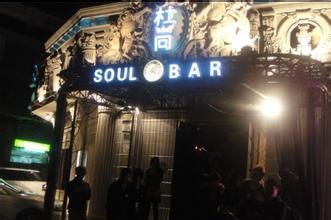
Nana Pub 娜娜小酒馆
Address: Longtou Road, Gulangyu Island, Siming District (思明区鼓浪屿龙头路)
Tel: 0592-2066308
Average price per person: 41 yuan
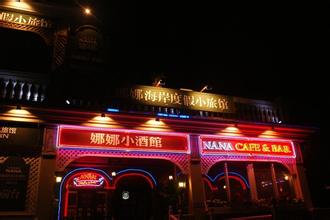
Old Grove Pub 老树林风情酒吧
Address: 1st Floor, Jinxiang Mansion, 28 East Hexiang Road, Siming District (思明区禾
祥东路28号金祥大厦1楼)
Tel: 0591-5805798 / 5057498
Average price per person: 77 yuan
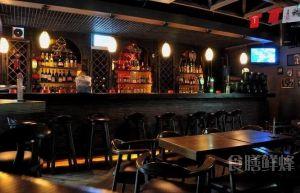
True Love Pub 真爱酒吧
Address: 1st Floor, Building A, Donghui Garden, 2-4 Yundang Road, Siming District
(思明区筼筜路2-4号东卉花园A幢1楼)
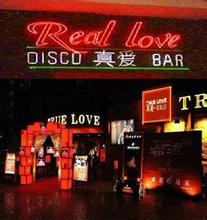
More information on
www.chinahighlights.com/xiamen/nightlife.htm
www.travelchinaguide.com/cityguides/fujian/xiamen/nightlife.htm
Cuisine
Xiamen cuisine is the main representative of Fujian cuisine which is famous throughout
China. Besides local dishes, food of other parts of the country also can be found here,
making this city a good destination for gastronomes. Being fresh, light, crispy and
slightly spicy in taste, Xiamen cuisine is characterized by the following dishes:
Steamed ShrimpsSeafood is famous for its extreme freshness. The location of Xiamen
on the southeast coast of China provides it with abundant sea products. Dating from
the Qing Dynasty, the seafood locally is always a traditional delicacy make from fresh
local fish, prawns, crabs and more, with the flavor depending on the various seasonings.
Herbal Meal has a long history in China and is celebrated at the Lujiang Restaurant in
Xiamen. Here, the herbal meal is delicately made according to the seasons and the
various effects of the herbs. It is delicious in flavor and very nourishing.
Vegetable Dishes in the Nanputuo Temple are made of vegetable oil, flour, beans,
vegetables and fruits. In accordance with the disciplines of the traditional Buddhist
diet, the vegetable dishes made here mainly depict the Buddhist ideas and topics,
attracting many tourists from both home and abroad.
Local snacks should not be missed during your trip as they are great in variety and
reasonably priced. Snacks have distinct flavors and some of them are listed below:
Tu Sun Dong is made from a sea product called 'Xing Chong' and is eaten with the
seasonings including sauce, vinegar, chili, catsup, mustard and garlic. It is now
becoming one of the most important cold dishes in any banquets.
Peanut Soup is simply made from peanuts but with very complicated production
process. It has a sugary flavor and is best eaten with some dim sum dishes such as
deep-fried twisted dough sticks, steamed stuffed buns and similar. Many believe the
best Peanut Soup is served at Huangzehe Restaurant in Zhongshang Road.
Spring Roll is a fried rolled pancake filled with slices of various vegetables, meats and
seafood. The local people like to have Spring Rolls as traditional snacks during festivals.
There are plenty of snacks that are not only well-known but also truly delicious including
the Xiamen Pie, Oyster Pancake, Rice Dumplings and Shacha Noodles.
More information on
www.travelchinaguide.com/cityguides/fujian/xiamen/dining.htm
Attractions
Mount Wuyi, South Putuo Temple, and Taining Danxia Landform are the top four
attractions in Xiamen, providing visitors with picturesque landscapes and a unique
culture. Xiamen University is considered one the most beautiful universities in China.
Join our well-designed Xiamen tours (some of which can be combined with attractions
in other cities) to explore this great coastal city.
South Putuo Temple
South Putuo Temple is a famous ancient temple in Xiamen. It has its name because of
its main conformity to Guanyin and Bodhisattva, as well as its location to the south of
Putuo Mountain, one of the four great Buddhist fields in Zhoushan of Zhejiang Province.
Southern Putuo Temple is grand in scale and has a total area of 25.8 hectares and a
building area of 21,270 square meters. Sitting on the principal axis from the south to
the north are the Hall of Heavenly Kings, the Precious Hall of Great Hero, the Hall of
Great Mercy and the Buddhist Scripture Garret. Annexes sit on both sides of the axis,
such as corridors, the Bell and Drum Towers, Haihui Hall, Puzhao Hall, Taixu library,
classrooms of the Buddhist Institute and so on. All of these buildings are spread over
a mountain slop of complicated topography with a generally solemn and magnificent
atmosphere.
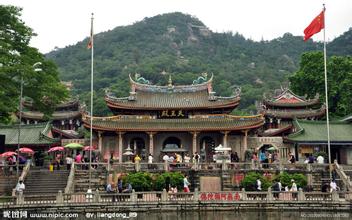
Gulangyu Island
Gulangyu is directly off the southeastern coast of China, and the quaint tourist
attraction is part of the bustling city of Xiamen. The island is famous for its natural
beauty, colonial style architecture and a myriad of interesting museums.
Besides the island's historic significance as an international port, Gulangyu is a great
place to escape from city traffic and highrise, though Xiamen has consistently been
voted as one of the most livable cities in China, and Gulangyu Island has been
recognized as one of Fujian Province's most scenic places.

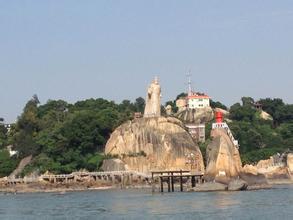
More information on
www.chinahighlights.com/xiamen/attraction
www.travelchinaguide.com/attraction/fujian/xiamen
- Address:No.1-30,North Huizhan Road, Siming District
- Address:West Guanri Road,Huili District
- Address:Huli Jiangtou
